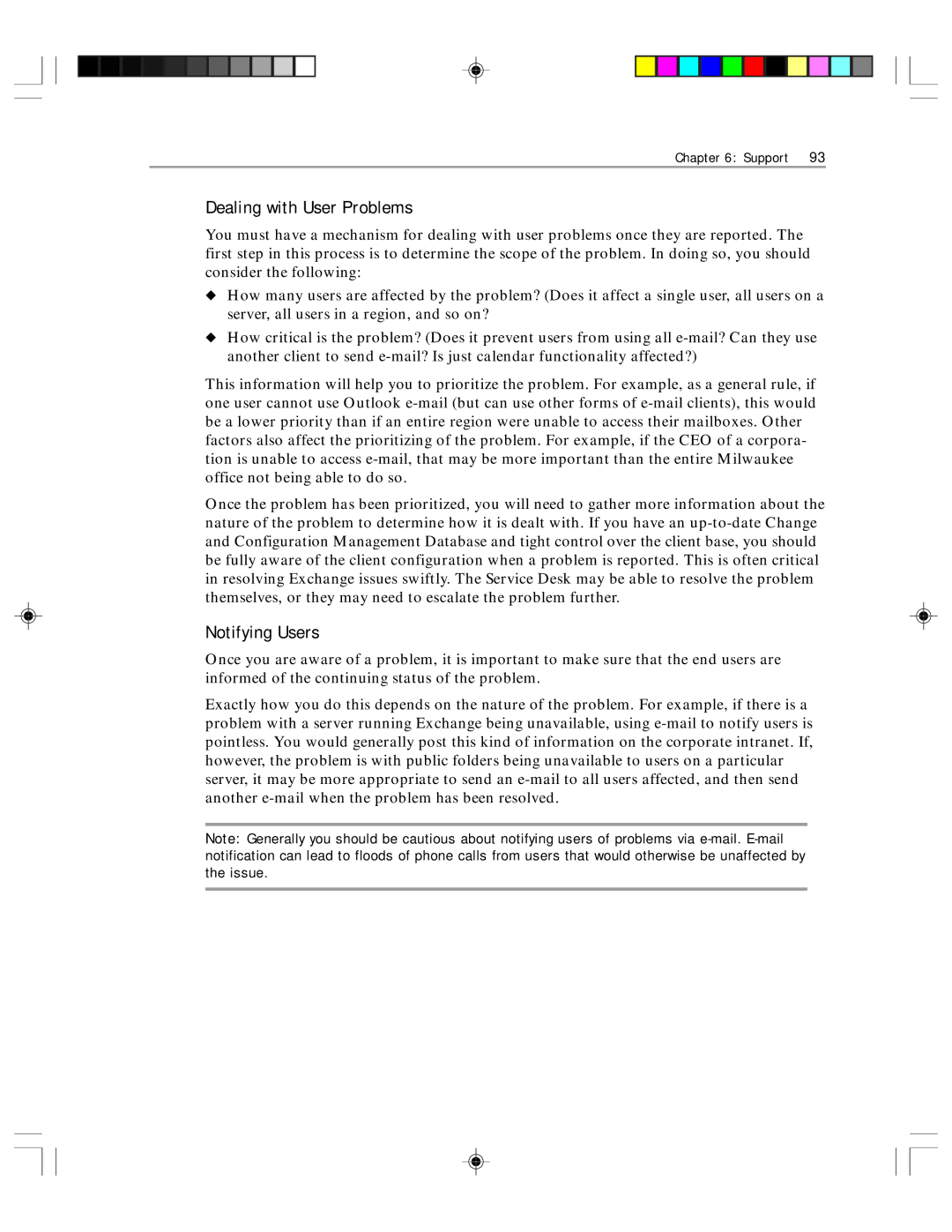Chapter 6: Support 93
Dealing with User Problems
You must have a mechanism for dealing with user problems once they are reported. The first step in this process is to determine the scope of the problem. In doing so, you should consider the following:
◆How many users are affected by the problem? (Does it affect a single user, all users on a server, all users in a region, and so on?
◆How critical is the problem? (Does it prevent users from using all e-mail? Can they use another client to send e-mail? Is just calendar functionality affected?)
This information will help you to prioritize the problem. For example, as a general rule, if one user cannot use Outlook e-mail (but can use other forms of e-mail clients), this would be a lower priority than if an entire region were unable to access their mailboxes. Other factors also affect the prioritizing of the problem. For example, if the CEO of a corpora- tion is unable to access e-mail, that may be more important than the entire Milwaukee office not being able to do so.
Once the problem has been prioritized, you will need to gather more information about the nature of the problem to determine how it is dealt with. If you have an up-to-date Change and Configuration Management Database and tight control over the client base, you should be fully aware of the client configuration when a problem is reported. This is often critical in resolving Exchange issues swiftly. The Service Desk may be able to resolve the problem themselves, or they may need to escalate the problem further.
Notifying Users
Once you are aware of a problem, it is important to make sure that the end users are informed of the continuing status of the problem.
Exactly how you do this depends on the nature of the problem. For example, if there is a problem with a server running Exchange being unavailable, using e-mail to notify users is pointless. You would generally post this kind of information on the corporate intranet. If, however, the problem is with public folders being unavailable to users on a particular server, it may be more appropriate to send an e-mail to all users affected, and then send another e-mail when the problem has been resolved.
Note: Generally you should be cautious about notifying users of problems via e-mail. E-mail notification can lead to floods of phone calls from users that would otherwise be unaffected by the issue.

